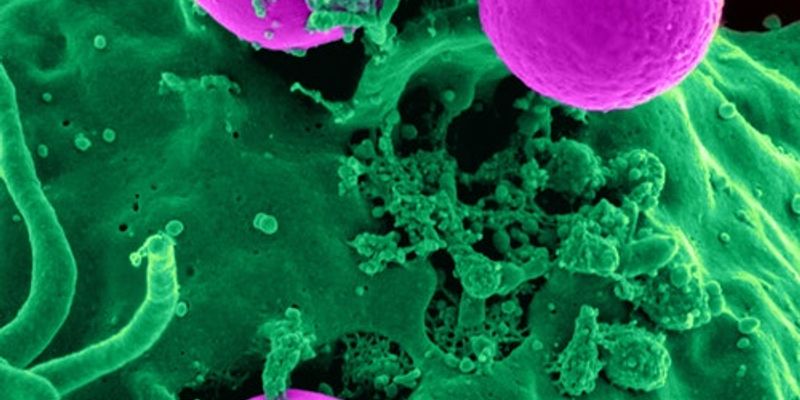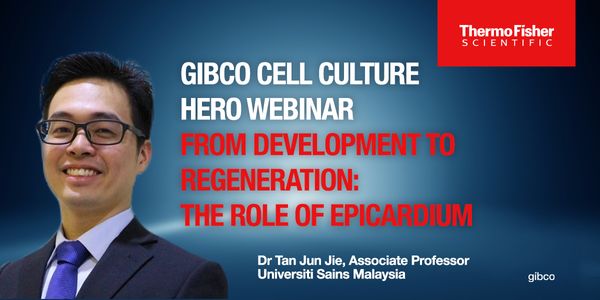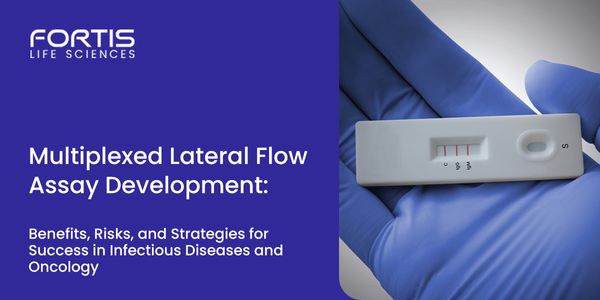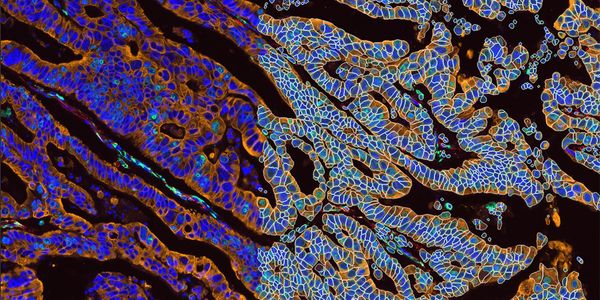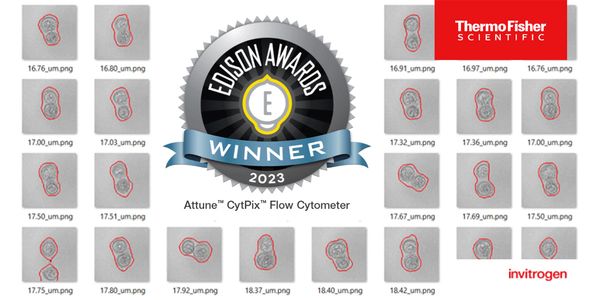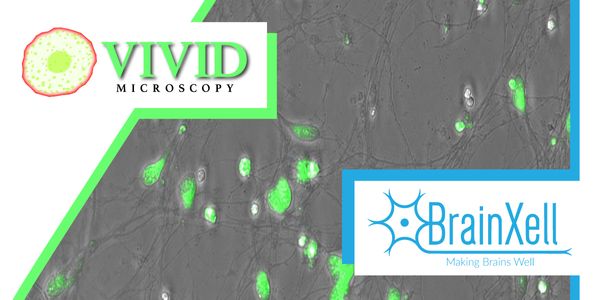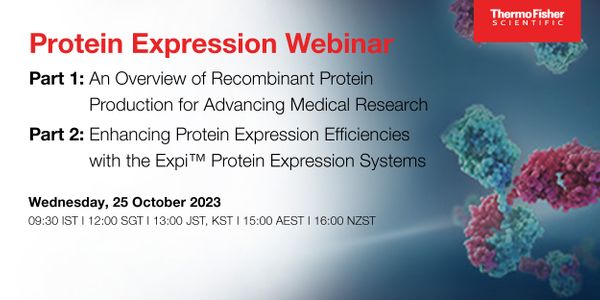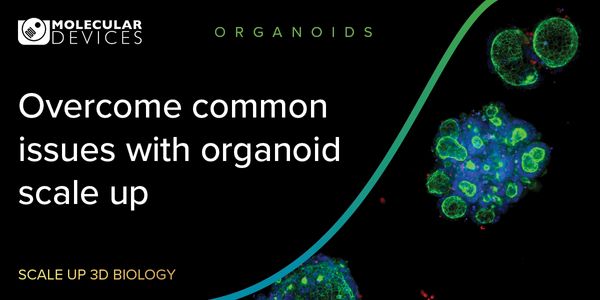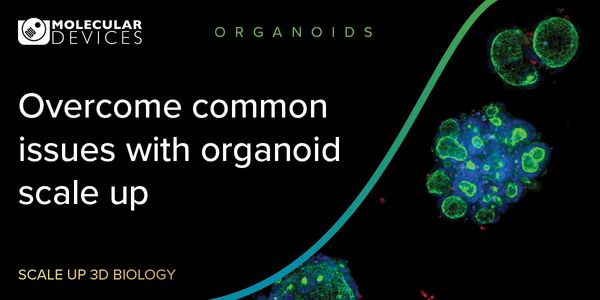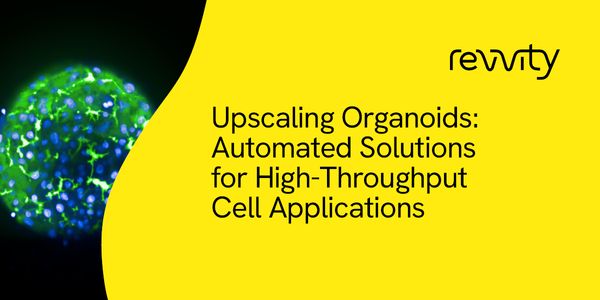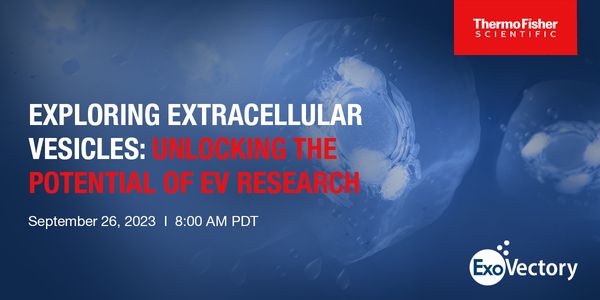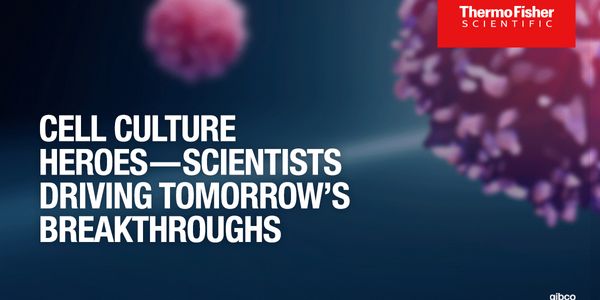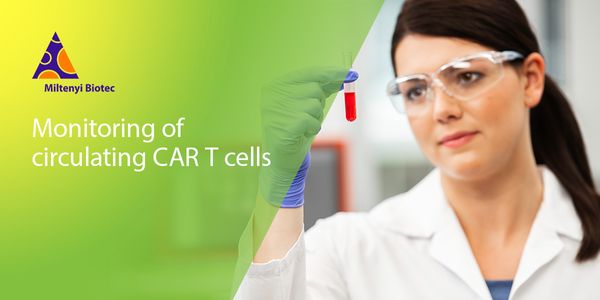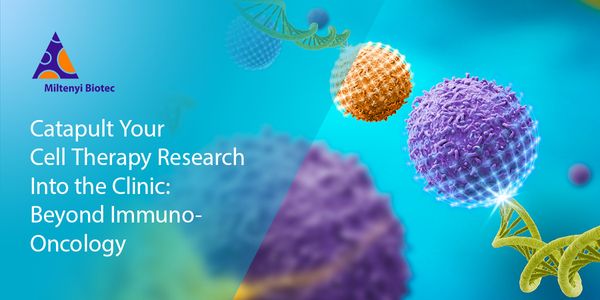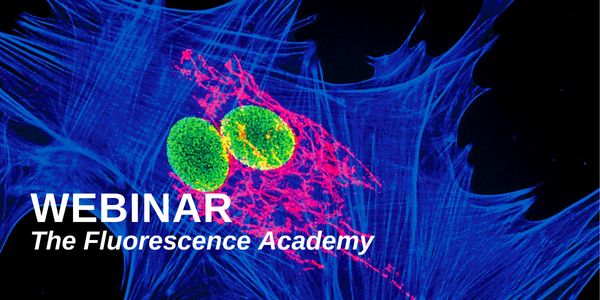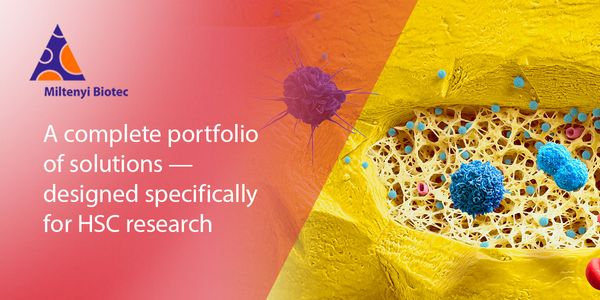Stem Cells
Stem Cells: are cells with the potential to develop into many different types of cells in the body. They serve as a repair system for the body. There are two main types of stem cells: embryonic stem cells and adult stem cells.
-
MAR 26, 2024 | 7:00 PMC.E. CREDITSThe implementation of a preemptive pharmacogenomics (PGx) program in a hospital setting requires a multidisciplinary approach to ensure seamless integration of each stage of the process for...Speaker: Steven Melnick. Ph.D., M.D. , Dr. David Mancuso, Pharm.D. CPh , MSPMSponsored By: Thermo Fisher ScientificMAR 26, 2024 | 8:00 AMC.E. CREDITSThe implementation of a preemptive pharmacogenomics (PGx) program in a hospital setting requires a multidisciplinary approach to ensure seamless integration of each stage of the process for...Speaker: Steven Melnick. Ph.D., M.D. , Dr. David Mancuso, Pharm.D. CPh , MSPMSponsored By: Thermo Fisher ScientificJAN 23, 2024 | 12:00 PMFrom drug discovery to organoid modeling of disease, stem cells are increasingly being used in research as a vital tool for scientific investigation. Due to the specialized nature of stem ce...Speaker: Daryl ColeJAN 23, 2024 | 10:00 AMOrganoid technologies are increasingly being used as in vitro models of human development and disease because they exhibit morphogenetic, structural and functional properties that recapitula...Speaker: Kalpana BarnesDEC 12, 2023 | 8:00 PMEmbryonic epicardium is crucial for normal heart morphogenesis. The tissue originates from the proepicardial organ, with cells migrating to form the outer mesothelial layer, giving rise to n...DEC 07, 2023 | 10:00 AMC.E. CREDITSLateral flow assay applications have become increasingly diverse in a post-pandemic world, and the areas of infectious disease and oncology continue to be at the forefront. In both areas, th...DEC 07, 2023 | 8:00 AMAs the vast landscape of genetic oncology continues to expand, the ability to understand and utilize the full potential of this rich data becomes increasingly challenging. As a result, resea...NOV 08, 2023 | 8:00 AMGenerating Insights into tissue microenvironments is crucial to our understanding of normal and abnormal tissue development such as during cancer progression. Spatial biology methods using m...OCT 31, 2023 | 9:00 AMGene therapy holds potential for treating neurological diseases by delivering genetic information into specific cell types. However, selective and efficient targeting of cell types remains c...OCT 25, 2023 | 8:30 PMThe CytPix is a flow cytometer that can simultaneously collect fluorescence data and high-resolution brightfield images of individual cells. This allows to better understand the morphology o...OCT 25, 2023 | 10:00 AMOxidative stress, a critical factor affecting cell health, has gained prominence in assessing various medical conditions. Given this importance, researchers need a wide range of tools to tho...Speaker: Daniel Sem, Ph.D., MBA, JD , Roxanne Alvarez, Ph.D.Sponsored By: BrainXell, Vivid MicroscopyOCT 25, 2023 | 8:00 AMThe CytPix is a flow cytometer that can simultaneously collect fluorescence data and high-resolution brightfield images of individual cells. This allows to better understand the morphology o...OCT 24, 2023 | 9:00 PMThis webinar is hosted by Thermo Fisher Scientific in collaboration with the Walter and Eliza Hall Institute of Medical Research (WEHI). The webinar aims to demonstrate the benefits of the E...OCT 24, 2023 | 8:00 AMOrganoids are three-dimensional (3D) multi-cellular, microtissues derived from stem cells that closely mimic the complex structure and functionality of human organs. They offer more accurate...OCT 24, 2023 | 10:00 AMOrganoids are three-dimensional (3D) multi-cellular, microtissues derived from stem cells that closely mimic the complex structure and functionality of human organs. They offer more accurate...OCT 05, 2023 | 1:00 AMC.E. CREDITSOrganoids continue to gain traction in drug discovery efforts as they offer a more biologically relevant disease model than traditional approaches. But they aren't without challenges. Jo...SEP 26, 2023 | 8:00 AMJoin us for an educational webinar that delves into the fascinating world of Extracellular Vesicles (EVs) and their impact on biomedical research and medicine. In collaboration with ExoVecto...Speaker: Roland Leathers, PhD , Jeroen de Vrij, PhDSponsored By: Thermo Fisher Scientific/GibcoSEP 13, 2023 | 9:00 AMCRISPR-based forward genetic screens can be used to identify essential genes in proliferating human cell lines. Although environmental factors also influence gene essentiality, most CRISPR-b...SEP 06, 2023 | 8:00 AMThe expansion and persistence of CAR T cells within patients is the key to a successful treatment. Therefore, monitoring of CD19 CAR T cells following infusion is of utmost interest. The CAR...Speaker: Dr. Annika Graband , Dr. Sabine Hünecke , Dr. Melanie BremmSponsored By: Miltenyi BiotecAUG 30, 2023 | 8:00 AMIn this third and final part of our translational cell and gene therapy webinar series we delve into cell therapy applications beyond immune oncology. Firstly, we will look into Miltenyi Bio...Speaker: Dr. Viola Stella Palladino , Kirsten Langeveld , Dr. Chao ShengSponsored By: Miltenyi BiotecAUG 01, 2023 | 10:00 PMC.E. CREDITSStem cells have the capability to develop into any specialized cell type, which makes them a valuable resource in research and regenerative medicine. Differentiated stem cell models provide...Inefficient knock-in of transgene cargos limits the potential of cell-based medicines. In this study, we used a CRISPR nuclease that targets a site within an exon of an essential gene and de...
Cell-based immunotherapy has become the new-generation cancer medicine, and “off-the-shelf” cell products that can be manufactured at large scale and distributed readily to treat...
JUL 18, 2023 | 12:00 PM
While HSC research holds immense potential for regenerative medicine and disease treatment, the field poses significant challenges. Successful isolation and purification — and the abil...
MAR 26, 2024 | 7:00 PM
C.E. CREDITS
The implementation of a preemptive pharmacogenomics (PGx) program in a hospital setting requires a multidisciplinary approach to ensure seamless integration of each stage of the process for...
Speaker:
Steven Melnick. Ph.D., M.D.
, Dr. David Mancuso, Pharm.D. CPh , MSPM
Sponsored By: Thermo Fisher Scientific
MAR 26, 2024 | 8:00 AM
C.E. CREDITS
The implementation of a preemptive pharmacogenomics (PGx) program in a hospital setting requires a multidisciplinary approach to ensure seamless integration of each stage of the process for...
Speaker:
Steven Melnick. Ph.D., M.D.
, Dr. David Mancuso, Pharm.D. CPh , MSPM
Sponsored By: Thermo Fisher Scientific
JAN 23, 2024 | 12:00 PM
From drug discovery to organoid modeling of disease, stem cells are increasingly being used in research as a vital tool for scientific investigation. Due to the specialized nature of stem ce...
Speaker:
Daryl Cole
JAN 23, 2024 | 10:00 AM
Organoid technologies are increasingly being used as in vitro models of human development and disease because they exhibit morphogenetic, structural and functional properties that recapitula...
Speaker:
Kalpana Barnes
DEC 12, 2023 | 8:00 PM
Embryonic epicardium is crucial for normal heart morphogenesis. The tissue originates from the proepicardial organ, with cells migrating to form the outer mesothelial layer, giving rise to n...
DEC 07, 2023 | 10:00 AM
C.E. CREDITS
Lateral flow assay applications have become increasingly diverse in a post-pandemic world, and the areas of infectious disease and oncology continue to be at the forefront. In both areas, th...
DEC 07, 2023 | 8:00 AM
As the vast landscape of genetic oncology continues to expand, the ability to understand and utilize the full potential of this rich data becomes increasingly challenging. As a result, resea...
NOV 08, 2023 | 8:00 AM
Generating Insights into tissue microenvironments is crucial to our understanding of normal and abnormal tissue development such as during cancer progression. Spatial biology methods using m...
OCT 31, 2023 | 9:00 AM
Gene therapy holds potential for treating neurological diseases by delivering genetic information into specific cell types. However, selective and efficient targeting of cell types remains c...
OCT 25, 2023 | 8:30 PM
The CytPix is a flow cytometer that can simultaneously collect fluorescence data and high-resolution brightfield images of individual cells. This allows to better understand the morphology o...
OCT 25, 2023 | 10:00 AM
Oxidative stress, a critical factor affecting cell health, has gained prominence in assessing various medical conditions. Given this importance, researchers need a wide range of tools to tho...
Speaker:
Daniel Sem, Ph.D., MBA, JD
, Roxanne Alvarez, Ph.D.
Sponsored By: BrainXell,
Vivid Microscopy
OCT 25, 2023 | 8:00 AM
The CytPix is a flow cytometer that can simultaneously collect fluorescence data and high-resolution brightfield images of individual cells. This allows to better understand the morphology o...
OCT 24, 2023 | 9:00 PM
This webinar is hosted by Thermo Fisher Scientific in collaboration with the Walter and Eliza Hall Institute of Medical Research (WEHI). The webinar aims to demonstrate the benefits of the E...
OCT 24, 2023 | 8:00 AM
Organoids are three-dimensional (3D) multi-cellular, microtissues derived from stem cells that closely mimic the complex structure and functionality of human organs. They offer more accurate...
OCT 24, 2023 | 10:00 AM
Organoids are three-dimensional (3D) multi-cellular, microtissues derived from stem cells that closely mimic the complex structure and functionality of human organs. They offer more accurate...
OCT 05, 2023 | 1:00 AM
C.E. CREDITS
Organoids continue to gain traction in drug discovery efforts as they offer a more biologically relevant disease model than traditional approaches. But they aren't without challenges. Jo...
SEP 26, 2023 | 8:00 AM
Join us for an educational webinar that delves into the fascinating world of Extracellular Vesicles (EVs) and their impact on biomedical research and medicine. In collaboration with ExoVecto...
Speaker:
Roland Leathers, PhD
, Jeroen de Vrij, PhD
Sponsored By: Thermo Fisher Scientific/Gibco
SEP 13, 2023 | 9:00 AM
CRISPR-based forward genetic screens can be used to identify essential genes in proliferating human cell lines. Although environmental factors also influence gene essentiality, most CRISPR-b...
SEP 06, 2023 | 8:00 AM
The expansion and persistence of CAR T cells within patients is the key to a successful treatment. Therefore, monitoring of CD19 CAR T cells following infusion is of utmost interest. The CAR...
Speaker:
Dr. Annika Graband
, Dr. Sabine Hünecke
, Dr. Melanie Bremm
Sponsored By: Miltenyi Biotec
AUG 30, 2023 | 8:00 AM
In this third and final part of our translational cell and gene therapy webinar series we delve into cell therapy applications beyond immune oncology. Firstly, we will look into Miltenyi Bio...
Speaker:
Dr. Viola Stella Palladino
, Kirsten Langeveld
, Dr. Chao Sheng
Sponsored By: Miltenyi Biotec
AUG 01, 2023 | 10:00 PM
C.E. CREDITS
Stem cells have the capability to develop into any specialized cell type, which makes them a valuable resource in research and regenerative medicine. Differentiated stem cell models provide...
Inefficient knock-in of transgene cargos limits the potential of cell-based medicines. In this study, we used a CRISPR nuclease that targets a site within an exon of an essential gene and de...
Cell-based immunotherapy has become the new-generation cancer medicine, and “off-the-shelf” cell products that can be manufactured at large scale and distributed readily to treat...
JUL 18, 2023 | 12:00 PM
While HSC research holds immense potential for regenerative medicine and disease treatment, the field poses significant challenges. Successful isolation and purification — and the abil...
